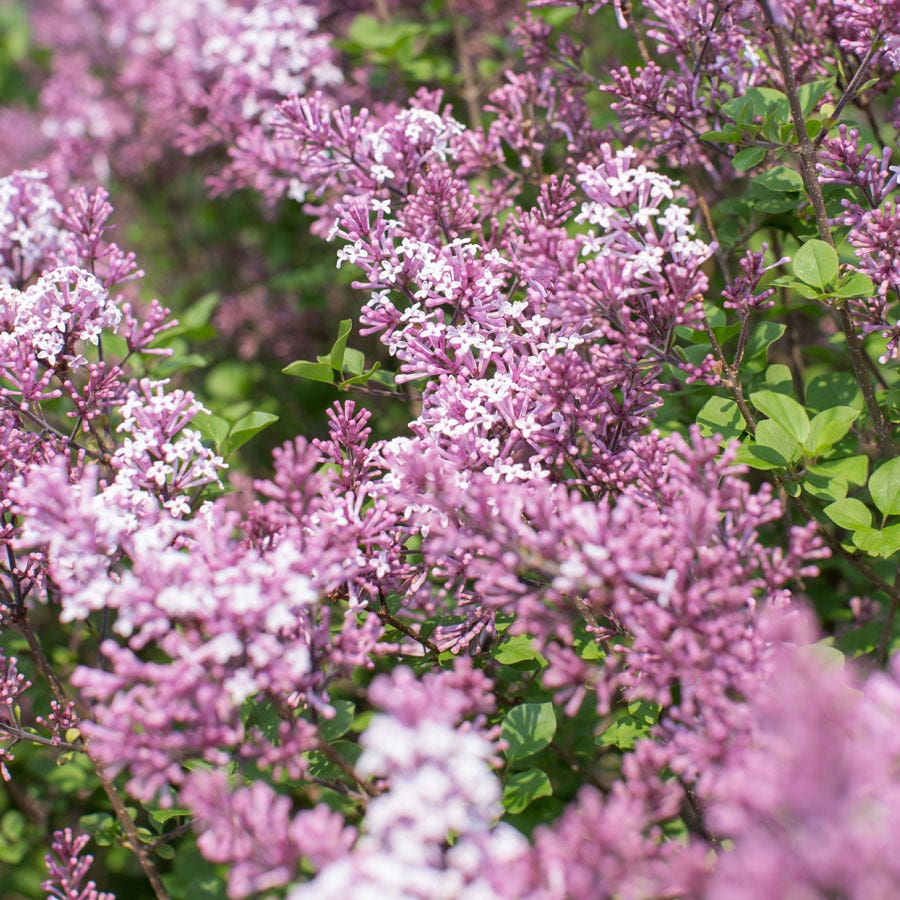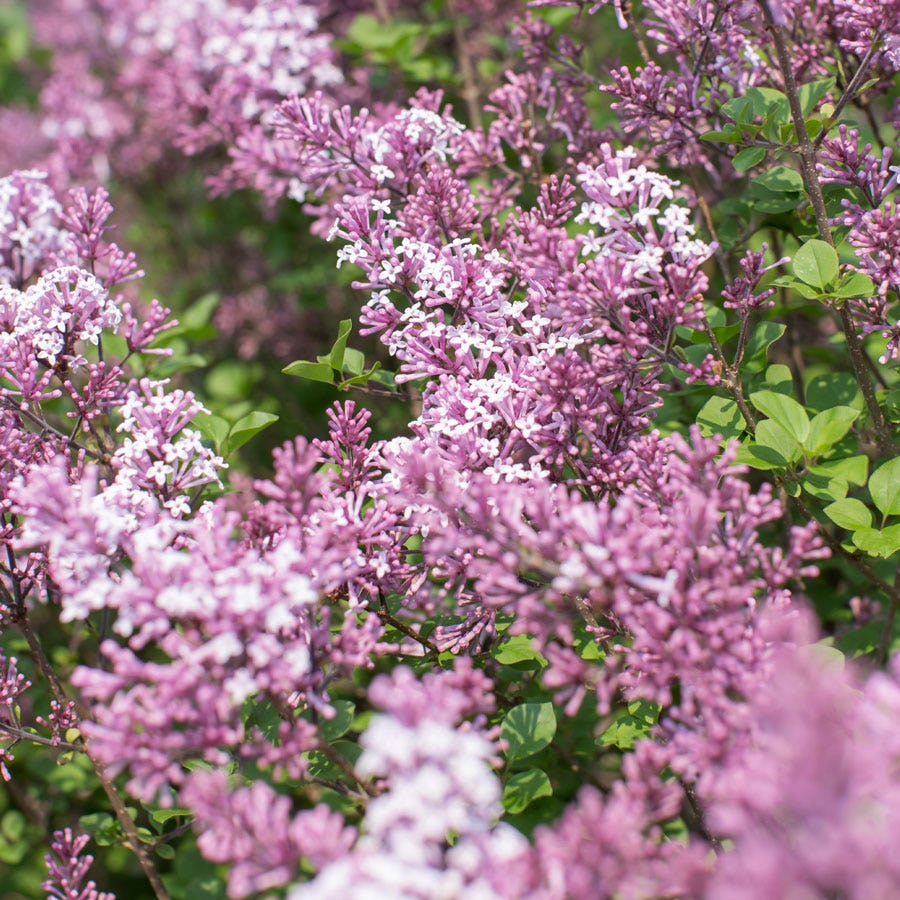

Zone
3 - 7
Mature Height
60
Mature Width
84
Light
Full SunWater
Moist, well-drainedSoil
Clay, Normal, loamy, Sandy
Description / Syringa Dwarf Korean Lilac
Royal Horticultural Society Award of Garden Merit
A dwarf Korean lilac variety, Syringa meyeri 'Palibin' is a deciduous shrub offering three seasons of interest. Small, broadly ovate leaves emerge dark green in spring, retain their color in summer, and turn reddish bronze in fall. Syringa Dwarf Korean Lilac blooms lavishly in late spring to early summer and first flowers at an early age. Its upright panicles of red-purple buds open to small, lilac pink single flowers that are very sweetly scented. The fragrant flowers attract bees, butterflies, and hummingbirds and make lovely bouquets. For longer-lasting cuts, harvest lilac blooms in the cool of morning, remove all leaves, and immediately place in fresh, cool water. Lilacs rarely bloom after cutting, so choose stems that have at least three-quarters of the flowers open.
One of the smallest and slowest growing lilacs, Syringa Dwarf Korean Lilac has a bushy, rounded-oval, low-spreading habit. The shrub is highly versatile, especially in small gardens, and easy to grow in urban environments. It's a lovely specimen and a great "filler" in a container garden, but it is shown to best effect when massed or grouped in beds and borders or as a screen.
Syringa Dwarf Korean Lilac is long-lived and easy to grow. It grows best in sunny locations with fertile, humus-rich, dry to medium moist, well-draining soil, having a neutral to slightly alkaline pH, but it adapts to poor soils. The shrub has more powdery mildew resistance than most lilacs. It is also deer resistant and drought tolerant. Any desired pruning should be done after the spring bloom. Spring flower buds will be removed if the bush is pruned in fall, winter, or early spring. Prompt pruning after blooming not only gives the plant a neat appearance but also increases bloom the following year.
The botanical name of lilac, Syringa (suh-RIN-gah), is from the Greek word syrinx, which means tube. This is because the stems of lilac contain a spongy pith which can be removed, leaving a hollow tube that has traditionally been used to create panpipes.
Product Details
Virtual SKU:
Selected Product SKU: 29446
Genus:
Species:
Variety: 'Palibin'
Bloom Color: Light PinkLight Purple
Foliage Color: Dark Green
Habit:
Light Requirements: Full Sun
Moisture Requirements:
Bloom End:
Uses: Special Features: Hardiness Zones: 3 - 7

